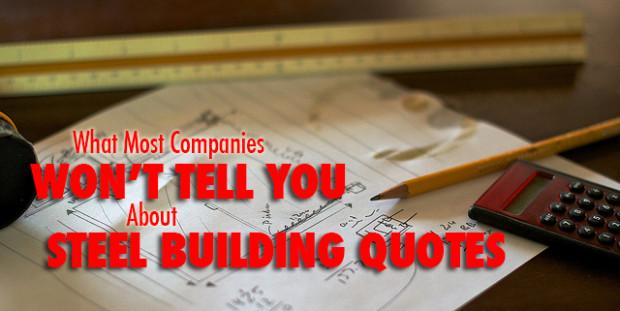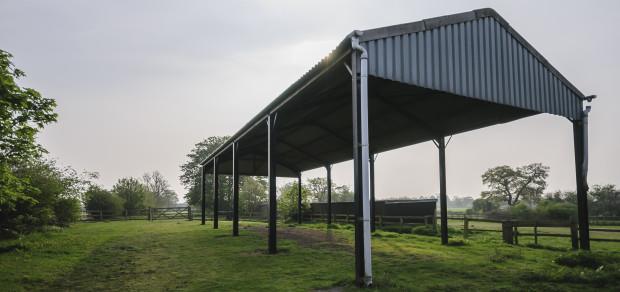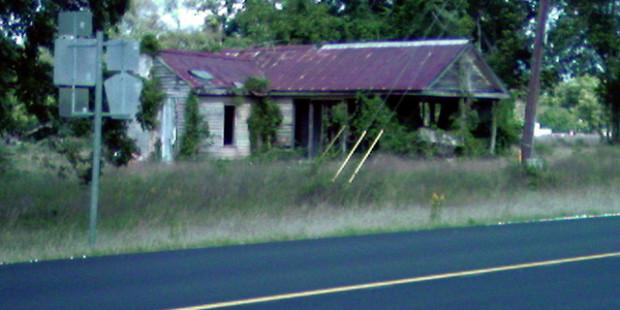What Most Companies Won’t Tell You About Steel Building Quotes

If you’re interested in a steel building for your home, property or business, chances are you’ll have to talk to a steel building provider at some point. Naturally, in order to get pricing, you’ll need to look at a quote or spec sheet. Do you have one, or a few in front of you now? Take a look, and read through your steel building quotes. What do you see?
Your steel building quote isn’t written in a different language, but for some first time builders, it may as well be. You don’t have to be a steel building expert to understand your steel building quote, but you do want to be able to decipher it well enough so you can understand exactly what you’re purchasing.
International Building Codes
Are you an expert on the International Building Code? No? It’s okay. You don’t have to be, but it’s important to have a working knowledge of the IBC when you undertake a steel building project. Steel building companies do their best to ensure everything is correct, but ultimately this is your project and the responsibility falls on you.
IBC 15 is the current set of standards a building must meet to be deemed a safe and legal structure. Before 2015, the last time the IBC was updated was in 2012 and the changes from 2012 to 2015 include the topics of administration, fire protection, means of egress, accessibility, structural systems and more. As you can see, typically there are many changes to the IBC whenever there’s an update. As with any revision, these usually help ensure buildings are as safe and efficient as possible with updates to load requirements. A snow load is the load induced by the weight of snow on your building and a wind load is the load caused by the wind blowing from any horizontal direction. Again, it’s common practice for the end user to contact their local county or municipality and obtain the correct wind loads, snow loads, seismic loads and permitting information. Do your correct research, and get your steel building provider the correct information so you can obtain an accurate quote.
Exposure rating
You should be aware of the exposure rating on steel building quotes. A large chunk of customers purchasing pre-engineered steel buildings will need either an ‘Exposure B’ or ‘Exposure C’ rating. According to the International Code Council, an ‘Exposure B’ rating is assigned to buildings in urban and suburban areas, wooded areas, or other terrain with numerous closely spaced obstructions having the size of single-family dwellings or larger. The ICC also says ‘Exposure C’ ratings are assigned to buildings in open terrain with scattered obstructions. The obstructions include surface undulations or other irregularities with heights less than 30 feet extending more than 1,500 feet from the building site in any quadrant. If your building fits into the ‘Exposure B’ rating, but you’re next to an open area like flat open country, grasslands and shores prone to hurricanes, your building will most likely earn the ‘Exposure C rating’. Metal building manufacturers work to ensure your building is up to date with all of the terms I just discussed, but brokers may try to pass off pre-engineered steel buildings with outdated codes or insufficient exposure ratings without checking them for accuracy. That’s not always the case, but will they ask you about it, or just assume?
Collateral loads
What are collateral loads? Metal building collateral loads are added dead loads hung from the building system, or any interior weight of permanent materials other than the actual metal building system. Electrical systems hanging from the ceiling, or an internal sprinkler system are both in the collateral load category. Pay attention to the collateral load number with respect to the size of your proposed building.
One of the best ways to ensure you’ll get a quality building with the right ratings and codes is to purchase directly from a manufacturer. Furthermore, if you’re in direct contact with your manufacturer, and you can communicate to ensure your building’s designs are compatible and meet all structural requirements. You’ll work with a dedicated project manager, who can talk to an engineer or detailer should there be any issues with your project. It’s all in-house communications, no outsourcing to a company overseas.
Don’t forget that steel prices, like many other commodities, are influenced heavily by supply and demand. Steel prices are projected to rise in 2016 due to that demand, China’s appetite for steel and the shifting market.
What is included?
Lastly, look and see what is included on your steel building quotes, and pay attention to what isn’t included. We get it – you’re looking to make the right decision for you, your family or your business. You’re probably looking at quotes from multiple companies. Your spec sheet or quote will describe exactly what you’re buying. Be sure to pay close attention to certain important words and phrases on the sheet. Are the columns and secondaries galvanized, or are they cheap red iron? Is a 50-year structural warranty offered? Will the building be made by a US manufacturer? These choices matter! They could be the difference between a building that lasts for a few years versus a quality building that lasts for generations.
Because pre-engineered steel buildings are designed for your exact location, we need to know your exact location! Keep in mind there can be a drastic change in elevations, even in the same county, so do your due diligence before you attempt to obtain a quote. Assuming the company will find the right information on their own, or for you, is a huge red flag. When it comes to your safety, don’t leave it up to chance.
Photo courtesy: Alan Levine
« It’s Easy Being ‘Green’ When Building Your Church
Debunking the Myth That Steel Buildings Cost More »
Popular Posts

Perhaps one of the most nonsensical engineering wonders that you’re going to encounter on your ranch or farm or even in your backyard is the ‘roof only’ structure – and why it should usually cost more than a building with four walls, doors, and windows. Perhaps you’ve got hay to store, a tractor to keep… …

I guess you could say it was a ritual of sorts. Every time I drove in and out of the town I used to live in, I’d have to pass by an old sign shop, right off the highway. I’m sure you’ve seen these little shops around your town. They’re everywhere throughout the country. This… …

